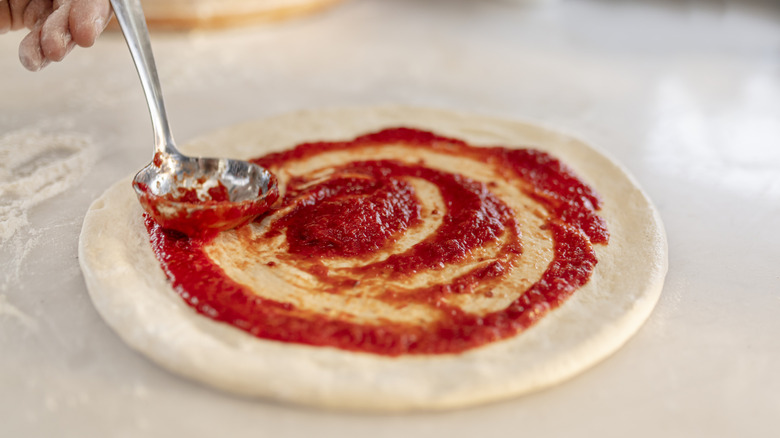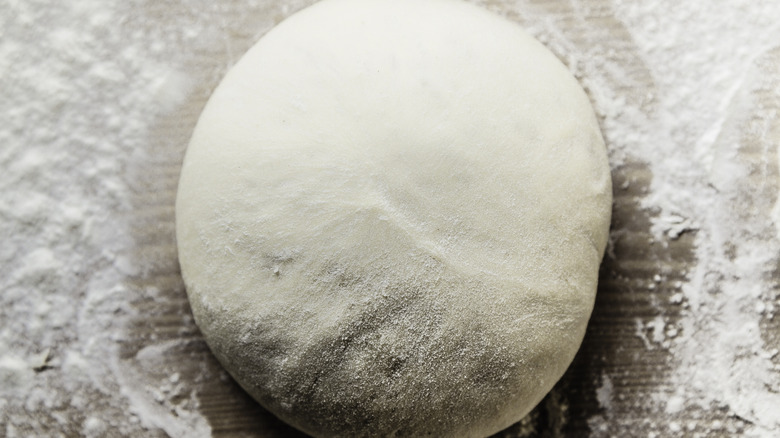The Fermentation Step You Shouldn't Skip For Restaurant-Quality Pizza Dough
If you're making homemade pizza dough, you're probably looking for the best ways to make your pizza taste restaurant-worthy. While you've probably already made sure you aren't making common mistakes with homemade pizza dough, like using the wrong flour, there's more you can do to ensure the best outcome.
You're likely aware that high-quality ingredients make a difference, but did you know that some fermentation techniques can transform a batch of run-of-the-mill dough into an elevated and tasty pizza? Food Republic checked with Serhan Ayhan, pizza consultant at Krave It, home of the Dubai Chocolate dessert pizza, to find out which fermentation technique would give us the best result. And according to Ayhan, cold fermentation is the key.
Fermentation is the process of yeast feeding on the sugars in the dough, helping to make it rise. While many recipes will have you fermenting — or proofing — dough in a warm place, cold fermentation is when you slow down the proofing process by letting it rise in a cold environment, like the refrigerator. "Cold fermentation creates more complex flavors in pizza crusts by slowing down the yeast activity," Ayhan said. "The extended fermentation time allows the yeast and bacteria to break down more sugars and starches, resulting in a more nuanced flavor."
And flavor isn't the only thing that cold fermentation benefits. "In terms of texture," Ayhan noted, "the slower fermentation allows for better gluten development, which leads to a dough that is both tender and chewy with a more open, airy crumb structure."
How to perform cold fermentation on pizza dough
Cold fermentation often takes place during the first rise, so during the step after you initially mix your dough. Typically, this step asks you to let it double in size in a warm place for about two hours. In the case of cold fermentation, you'll be mixing your dough as usual, putting it in a bowl, and placing it, covered, in the refrigerator. While 24 hours is the minimum amount of time to let it ferment, it's said that three to five days is the sweet spot for beautifully fermented dough (we know, it's hard to resist making it sooner). This time spent fermenting will result in a chewy and airy texture, complex flavor, and stretchier dough that's easy to work with.
Once your dough is done doing its thing in the refrigerator, you then take it out and work with it as usual for a pizza recipe — so dividing it into equal-sized balls (you can use a kitchen scale to get the right size), rolling them, and letting those go through a second proof at room temperature. This usually takes about five hours, so plan your pizza-making accordingly.


